
“Returning visitors convert 73.72% more than first-time visitors.”
Barilliance
If new visitors are the waves your business needs for growth, returning visitors are the ones that help your business flourish. So, if you’re not actively trying to bring back visitors to your website, you’re leaving money on the table.
Gated content can help you with one of the most reliable ways of bringing users back to your website, building an email list!
Many marketers effectively use gated content to drive email sign-ups and membership registrations. If you’re also interested in gating your content to generate leads and drive memberships, this article is for you.
In this article, we’ll show you an easy way to create and add gated content to your WordPress site. It’s also worth noting that gated content may not work for everyone. This is why it’s vital to understand whether you should gate your content or not. Let’s start by understanding what gated content is!
What is Gated Content?
Gated content refers to exclusive content accessible only with the owner’s permission. It typically requires users to complete a form and serves as a potent lead generation tool. Brands leverage gated content, such as ebooks, videos, PDFs, and product demos, to gather valuable data about their prospects, aiding in targeted marketing efforts and nurturing customer relationships. In some cases, the user may need to purchase a subscription to access the gated content.
When used correctly, gated content can be a powerful strategy for generating leads. However, it has some downsides too. While you can increase the possibility of boosting email signups by gating your content, you might also scare off some users(usually new users). We recommend using gated content depending on your user’s lifecycle stage and whether your content is worth gating.
How Can Gated Content Benefit You?
Marketers tend to gate content they think is truly valuable. On the other hand, users only give away their information when they understand the value of gated content. However, if you can persuade people to sign up for your gated content, it can benefit your business in several ways.
- Gain audience information: Until you acquire information about your visitors, you don’t know who they are, and you don’t have a way to reconnect with them. Content gating can help you gain information such as email addresses and phone numbers.
- Understand the audience better: When you constantly acquire information about your audience, you understand them better. You’ll know your target audience, what they are looking for, and what can solve their problems. This makes lead nurturing more convenient.
- Build a trusting relationship: No one gives away their personal information to a brand they don’t trust. Thus, gated content often becomes a pillar for building a trusting relationship in which your audience sees your brand as an authoritative one.
- Streamline sales process: Since people give away their personal information in exchange for gated content, they tend to be more qualified than regular email subscribers. As a result, it gets easier for brands to streamline their sales process with gated content.
Is it Worth Gating Content?
Gated content can be an effective strategy in driving email sign-ups and forcing membership registrations. However, it may not be effective for you if you’re unaware of the drawbacks. So let’s look at the drawbacks of gating content.
- You might scare off new visitors: New visitors often look for ungated content. If you place a gate before your content, it’s likely to scare off most new visitors as people do not feel comfortable sharing their personal information with a brand they don’t trust.
- Bad for SEO: Since search engine crawlers are usually discouraged from indexing gated content, they won’t add any SEO value to your website. Moreover, people will typically avoid sharing or linking to gated content. Thus, gating most of your content isn’t the best approach when it comes to SEO.
- You will reach a limited audience: Oftentimes, it’s hard to promote gated content organically. While they don’t add any SEO value, social media platforms often limit the number of post views. So, if you’re not ready to put serious effort and budget into promoting your gated content, reaching a significant portion of your audience can be difficult.
Considering the benefits and drawbacks, it’s safe to say that gating the wrong content at the wrong stage of a customer’s lifecycle might discourage a potential client from engaging with your business. On the other hand, offering highly valuable gated content at the right stage of a customer’s lifecycle can help you gain more qualified leads and increase your overall conversion rate.
So yes, if you have valuable content that you think should only be available to a few needy people, it’s worth gating your content. If you’re still unsure whether you should gate content or not, take a look at this Hubspot diagram below:
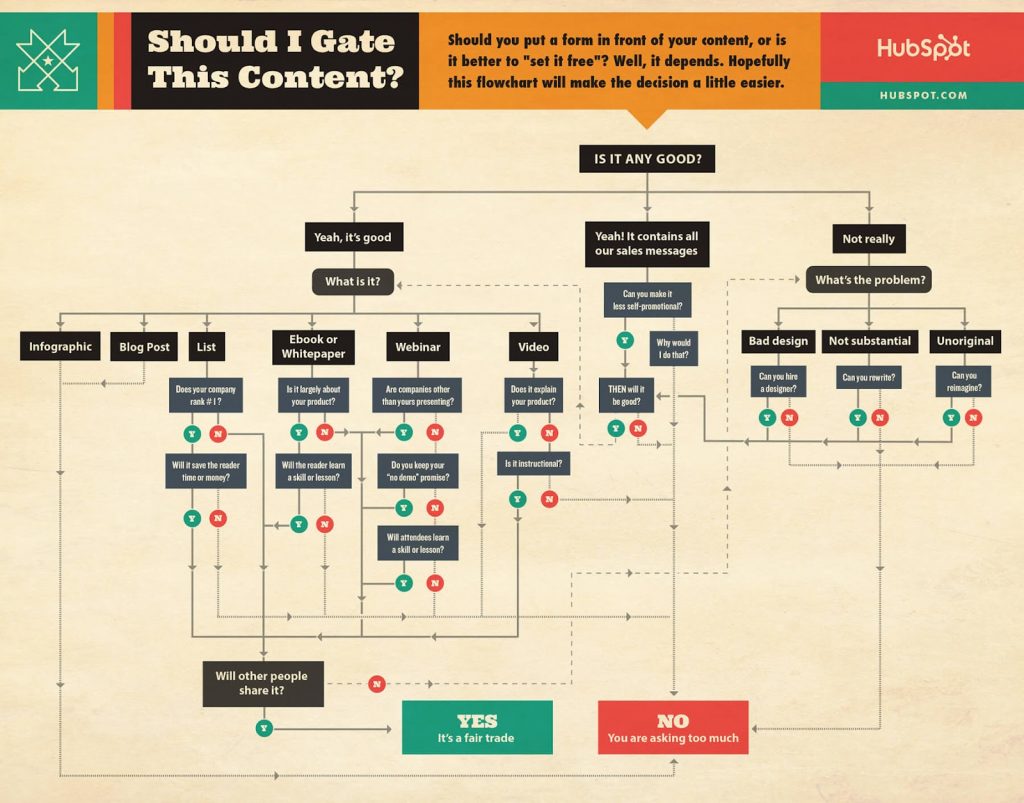
How to Add Gated Content to Your WordPress Site
Adding gated content to your website is a relatively easy task if you have the right tools. You can install many plugins that let you restrict access to your content. However, implementing a gated content strategy can be challenging.
So let’s learn how to set up everything correctly to reap the maximum benefit from your gated content.
Build Your Website’s Following
If you’ve read the points mentioned earlier, you know how gated content can benefit your business and whether your content is worth gating. However, taking your website to a point where gated content can be an effective strategy for your business is difficult.
In order to have any success with gated content, you need to have a tremendous amount of traffic. So before gating content, we recommend growing your website traffic through the following methods:
- Publish content: Content marketing is highly effective for generating search engine and social media traffic. So create new content often and publish them regularly.
- Utilize social media: Social media has become a popular source of website traffic in recent days. You can create social media accounts, pages, and communities to connect with your audience often and generate traffic for your website.
- Email marketing: Email marketing is one of the most prominent methods for building an audience of your own and driving regular visitors. So build a mailing list and stay in touch with your audience with email marketing. If you need help, check out our beginner’s guide to email marketing.
- Learn and apply SEO: Search engines, especially Google, can be an excellent source of website traffic. Optimizing your website for the best visibility, aka Search engine optimization, can help you drive a sizable amount of traffic to your website. Learn and apply SEO on your blog posts and pages to take full advantage of search engines. You can check out this guide from Google to get started with SEO.
There’s no straightforward way of gaining website traffic; it takes time. However, the returns are well worth the effort. With more website traffic, you’ll be able to generate more qualified leads and multiply your ROI.
Decide Which Content to Gate
Understanding what to gate is probably one of the most challenging questions a marketer can face. As we’ve mentioned, you need to consider the potential value customers will receive from the content.
Ideally, gated content should provide 10x value compared to regular content to trigger someone to sign up. Considering your content does, here are a few types of content that work best:
- Exclusive posts and knowledge base
- E-books
- Free access to tools and resources
- Templates
- Webinars
- Courses
- Training Videos
Use a Plugin to Restrict Access to Your Content
Once you have enough visitors to offer your gated content, the next step is to restrict access to your content using a content restriction plugin. While you can find tons of plugins for content restriction on the WordPress repository, we like Paid Memberships Pro.
Update: Paid Memberships Pro is no longer available to download from the WP.org repository at this moment. You can still download the plugin from their website.
This awesome membership plugin allows you to create unlimited membership levels and sell them through Stripe, Paypal, and other popular payment gateways. It also integrates nicely with FluentCRM.
Let’s look at how it works.
- First, go to your WordPress dashboard and click Plugins>Add New.

- From the plugin repository, search for Paid Memberships Pro and click Install. Once installed, you’ll have to click Activate to activate the plugin.
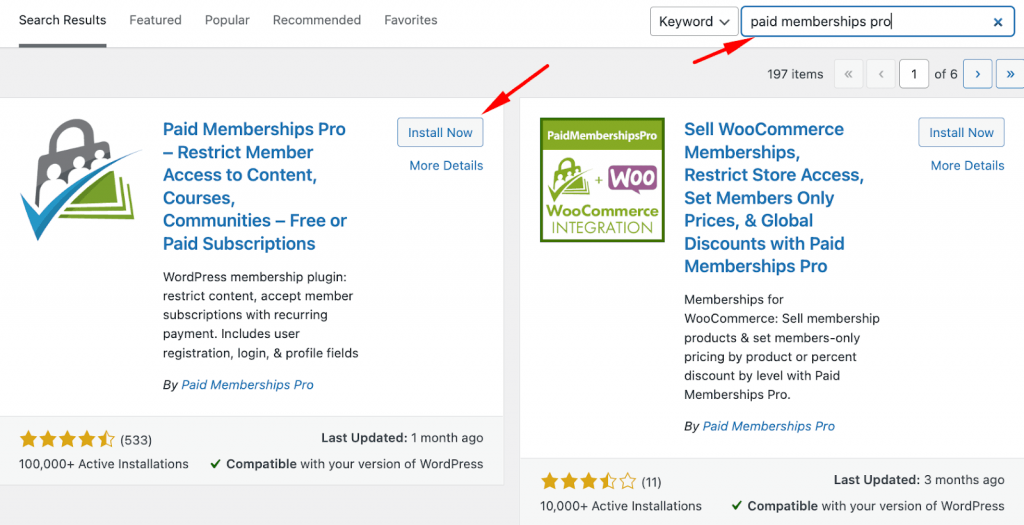
- Access Paid Memberships Pro from your right sidebar and create a new membership level by clicking Create a Membership Level. You can create unlimited membership levels if you want.
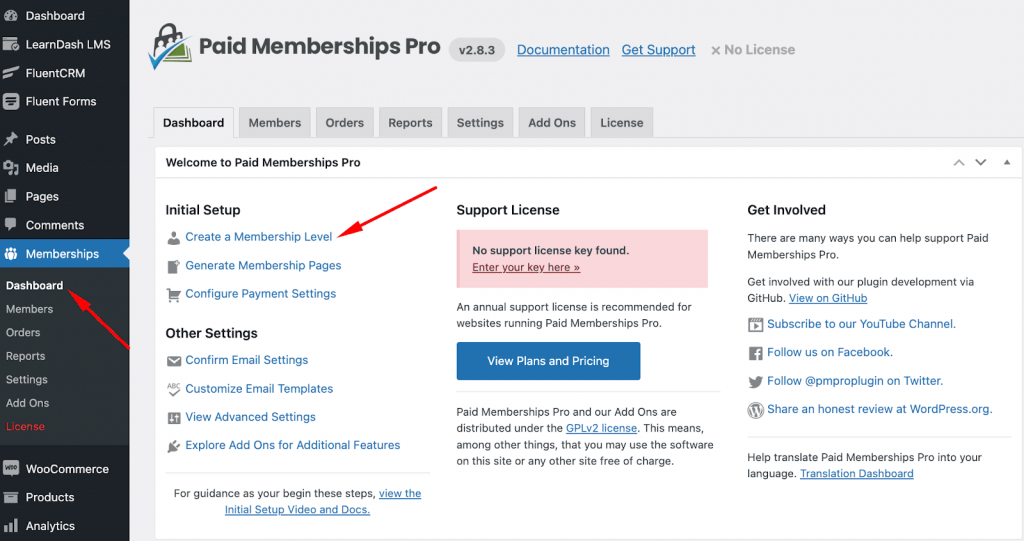
- Once you’ve created your membership levels, generate membership pages from Settings>Pages to allow users to register on your website. You can also manually create and configure pages on your own.

- Finally, set up a payment gateway from Settings>Payment Gateway if you want to sell memberships(Optional).
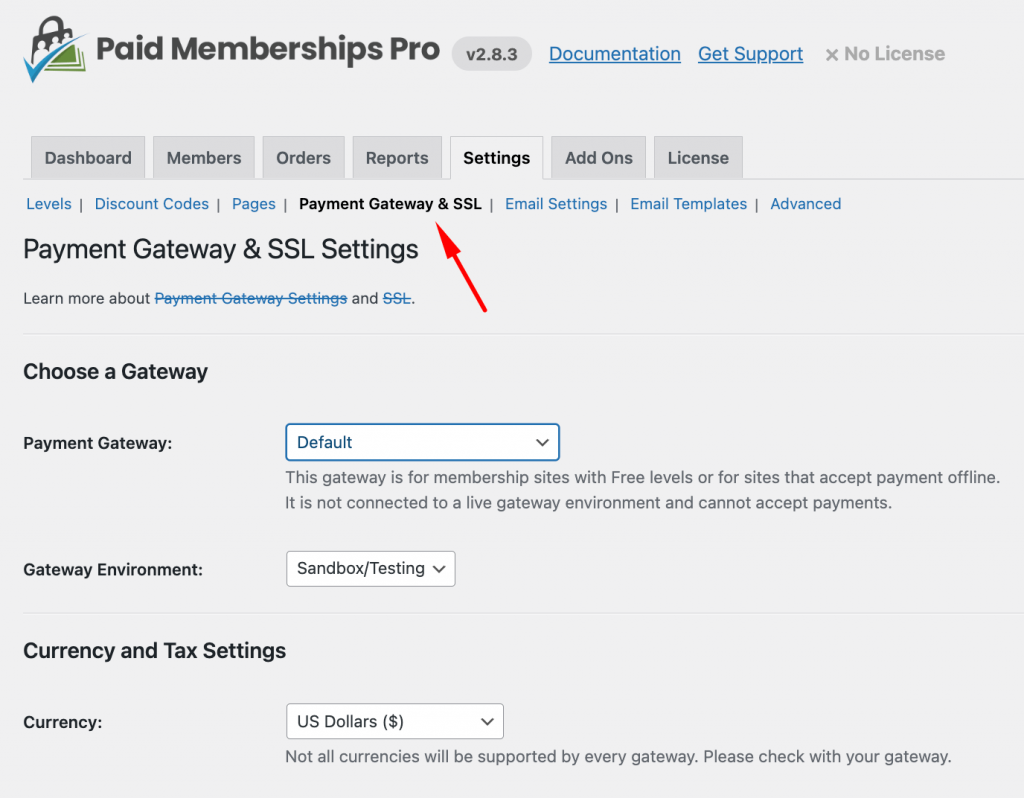
That’s it. Every time you’re creating a page or post, you can restrict access to your content based on the user’s membership levels by using the content restriction checkbox.
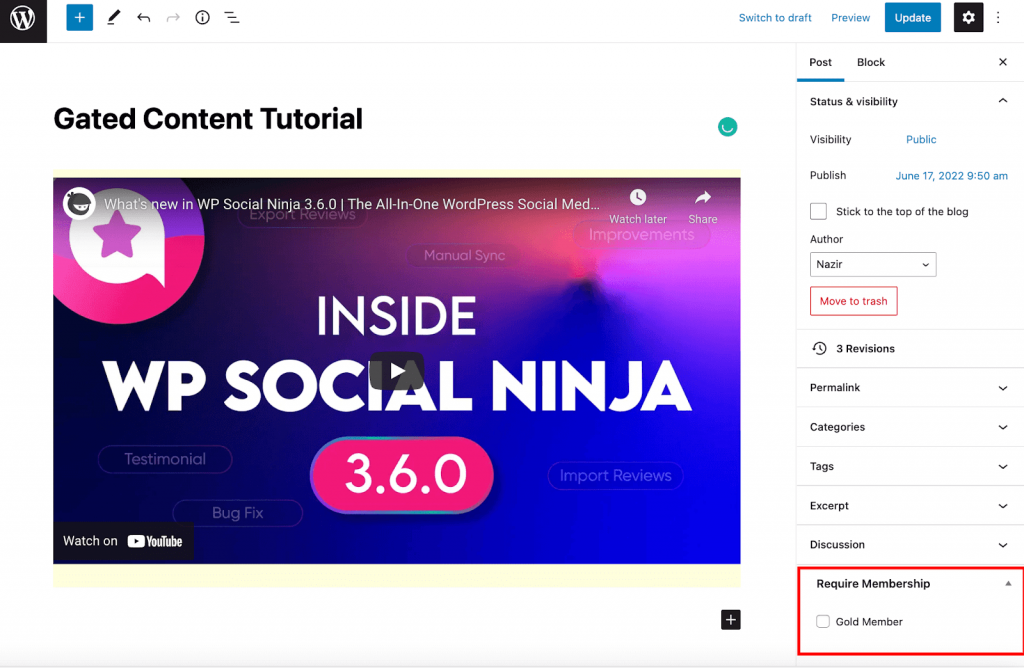
If you’re a membership website selling restricted content, you can utilize FluentCRM to nurture your leads as it comes with automatic integration with Paid Memberships Pro. You can automate email campaigns based on membership level assignments and membership assignments.
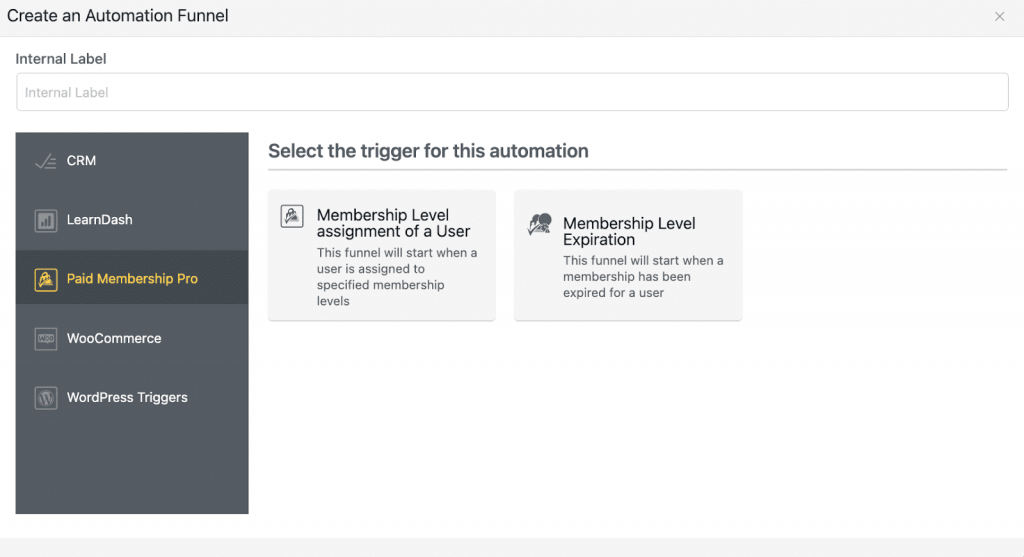
Here’s a simple upselling workflow we’ve created using FluentCRM:
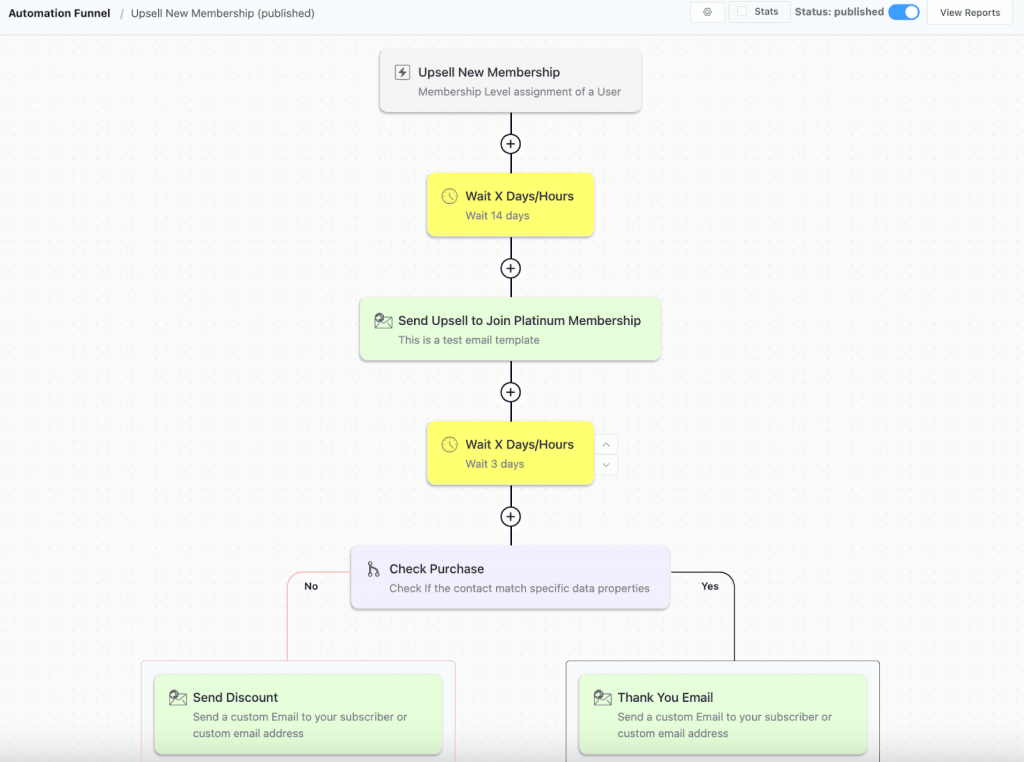
- Remember we’ve also mentioned gating ebooks for building your email subscribers list?
You can also do that with FluentCRM! In that case, all you have to do is create an email sign-up form and set up a custom welcome email campaign.
Besides, FluentCRM offers many other mind-boggling features to run your website’s email marketing efficiently. So don’t forget to try FluentCRM Pro. If you don’t like it, you can always get a refund within 14 days!
Hide Your Gated Content from Search Engines
While content restriction plugins make it easy to restrict content access, search engines can still find them easily. As a result, unregistered users can still find those pages. This is why it’s ideal to hide those pages from search engines altogether.
In order to hide content from search engines, you need to create a robots.txt file to request search engines not to index that particular page or post. However, an easier approach is to use an SEO plugin to avoid indexing those pages or posts. Here’s an example using SEOPress:
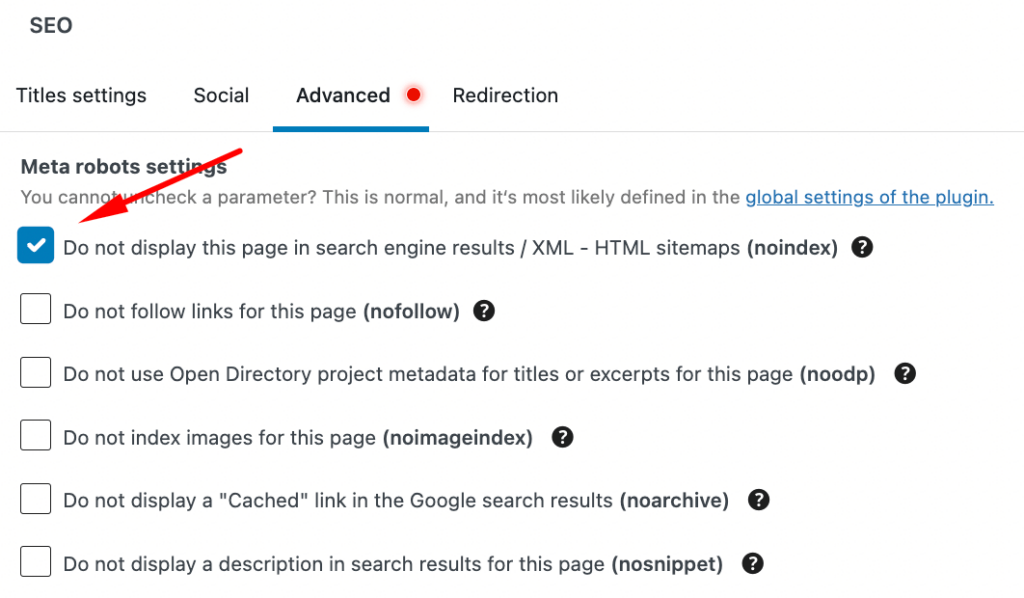
3 Excellent WordPress Plugins for Creating Gated Content
Paid Memberships Pro is an excellent plugin for gating content. However, other plugins can do this nicely as well. Here are the top plugins to use for gating content on WordPress:
MemberPress

MemberPress is the most popular WordPress membership and user role permission plugin with over 8,00,000+ active installations. It comes with a simple and effective user interface through which you can create membership levels and restrict access to content based on user role permissions.
You can make your entire website private, give multiple user roles, clone roles, and use login form widgets using MemberPress. Furthermore, MemberPress allows you to create role-based hierarchies and set dashboard accesses based on user roles. It’s also possible to set view permission for specific content blocks, meaning you can show or hide specific content blocks.
Paid Memberships Pro

Paid Memberships Pro is another top membership plugin that over 1,00,000 WordPress users have adopted. This plugin was designed with membership website creators in mind and allows one to create and sell unlimited memberships.
With Paid Memberships Pro, you can easily create and sell memberships through Stripe, Paypal, and many other payment gateways. It also supports recurring payments, custom trials, Variable pricing, donations, discount codes, content restriction, drip content, and content personalization and integrates nicely with LMS and email marketing tools.
Restrict Content Pro

As the name suggests, Restrict Content Pro is a powerful content restriction plugin that gives you full control over who gets to see your content and who doesn’t. It allows for creating unlimited membership levels and selling them on a free, trial, premium, or recurring subscription basis.
With the intuitive interface, you can easily manage, monitor, and control memberships. Like MemberPress, you can also control viewership of specific sections of your pages and posts using Restrict Content Pro. Furthermore, users can self-manage their memberships. And, of course, it integrates with many LMS and email marketing tools!
- What’s best about these tools?
Glad you’ve asked! FluentCRM integrates with these plugins automatically. Thus, you’ll have no problem driving email sign-ups and memberships using one of these plugins with FluentCRM. So go ahead and give it a go. You’ll surely thank us later!
Generate More Leads with Gated Content
Gated content can give your lead generation strategy a noticeable boost if implemented properly. However, it’s wise to consider what content you’re gating and when you’re offering the gated content. We hope this article helped you create and add gated content to your WordPress website. If you still have questions, don’t forget to drop them in the comments section!
Frequently Asked Questions
Gated content is a controversial strategy. So it’s pretty obvious that you’ll have a few questions in mind before implementing them. So here are some frequently asked questions and their answers—










Leave a Reply